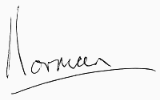norman.comfort@getcomfortable.co.uk, or talk to me on 07530 708125. Let's do this.....
What’s different between Oregon Wine Region and Washington?
Recently I have been thinking differently about wine regions. Instead of thinking about what makes the region distinctive, I’ve been trying to think more clearly about how to compare and contrast different regions that make wine. One question I asked…
